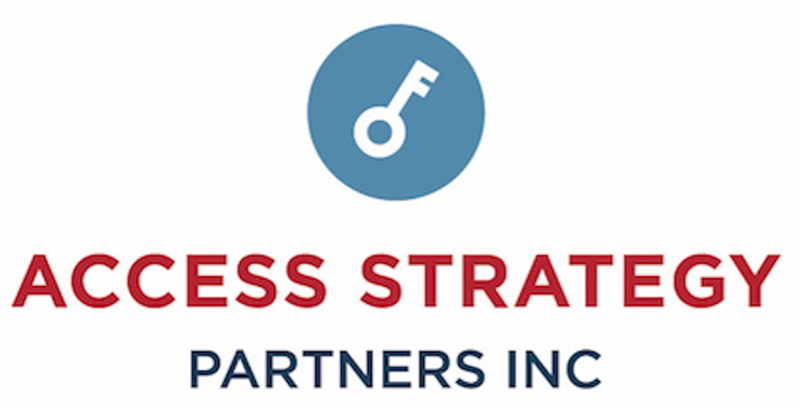Preparedness is key for forward-thinking supply chain executives.
By John Strong, Co-founder and Chief Consulting Officer, Access Strategy Partners Inc
December 2022 – The Journal of Healthcare Contracting

“China Begins Live Fire Drills, Effectively Blockading Taiwan” roared the headline on the front page of the Wall Street Journal several months back. The following day, in their “Review” section, the headline read “The Coming War Over Taiwan.” Should these headlines and opinions stir a reaction if you are a healthcare supply chain professional? Probably.
We learned earlier this year it doesn’t take much to mess up the U.S. healthcare supply chain for commonly used – but vital – products. For products such as contrast media, which in part come from American-based companies, we learned the answers are not always self-evident or easy to understand. A major plant was in Shanghai. Then there was baby formula. Really?
The contrast shortage taught us valuable lessons. If you don’t have products readily on hand in sufficient quantity, it can result in lost patients and revenue. Moreover, shortages have added days or weeks to some patients getting an important diagnosis – something no one wants to go through or must wait for. This shortage came about because of a China lockdown for COVID.

Now, the U.S. Customs Service is implementing the Uyghur Forced Labor Prevention Act (UFLPA). Companies doing business in China must now prove to their satisfaction that products being imported into the U.S. were not produced by forced labor. While this impacts products from the Xinjiang region of China the most, and it is not a major supplier of disposable medical products, it does produce sophisticated components for many types of equipment.
How vulnerable is your supply chain if relations between the U.S. and China continue to worsen? What would happen if major airports or shipping lanes are closed? What if Taiwan exports of medical products and components used in med tech devices suddenly dry up?
What products are vital to your day-to-day operations?
Have your most critical products identified. While there may be substitutes for some products originating in southeast Asia, it is critical to have substitutes identified and sometimes have cases ready. We’ve learned that financial penalties for failure to deliver really don’t matter when patients cannot be treated and there are disruptions to procedures and patient care.
Force Majeure clauses may excuse a supplier’s obligation to perform. Where does that leave you if they invoke that clause? Identify patient care critical items and ensure that you have backup and alternatives for continuous supply.
Start with your distributors
Private label products have become a real cost-saver and used by most hospitals and providers around the country. Often they are taken for granted. Is your primary supplier heavily dependent on Southeast Asia and China for some of these products?
Determine which products are critical to your operations and discuss the sources of these products with your distributor representatives now. Work with them to ensure they have backup supply plans – so that, if possible, you don’t need to have them yourself. If they cannot provide these answers, start planning yourself. In many contracts, Force Majeure events include war – and can apply to both parties in the event of backorder or failure-to-supply situations. Each party in a well-written contract may invoke the clause.
Look at critical items in major departments
Contrast media is certainly one great example of a product we have depended on Southeast Asia for. But there are others. They can include simple items like surgical gloves or disposable gowns, or technical items using semiconductors. Should you have more than one source of supply?
It should be obvious, but it is up to supply chain to effectively identify at-risk items and collaborate with departmental leaders to ensure that reliable supplies or alternative products can be sourced. For example, if you are having trouble locating supplies of products fabricated from aluminum it probably is not going to get any easier or less expensive anytime soon.
Good supply chain customer service demands that you work with every department to ensure they have a backup of items they deem critical that might be imported and could run afoul of production delays, transportation delays, tariffs, or embargoes.
Plan capital purchases well in advance
In August President Biden signed the CHIPS Act, which makes $53 billion available from the federal government to support domestic production of semiconductors. Onshoring chips is helpful, but this won’t happen for some time.
Meanwhile, Taiwan makes about 90% of the most sophisticated semiconductors available. Many are used in med tech devices and are hard to find – even before the rhetoric has ramped up.
If you are planning important capital purchases, especially med tech in the second half of this year, now is the time to collaborate with your key suppliers and, if possible, sequester available product for delivery later in the year or in 2023. Short of that, if supplies are tight, now might be the appropriate time to get on waiting lists.
Creative workarounds
Over the years, many products morphed from reusable to disposable. Consider returning to reusable products in advance of imported product shortages or high re-shored demand. If pre-assembled tray manufacturers cannot source certain components, consider alternative products and pulling together alternative “sets” of products until shortages are eliminated.
During the pandemic, more clinical “flexibility” in terms of products and brand preference was common due to shortages – especially of PPE. That flexibility may be required again if our relationship with China continues to deteriorate in the future, or if China blocks shipping lanes.
Planning, analysis and then communication with possibly affected users can help drive user satisfaction and collaboration if supply chain issues become even more prevalent in the coming months. While it is highly speculative if there may be a war over Taiwan, being prepared regardless could result in future dividends for forward-thinking supply chain executives. This time around, shortages could become more widespread than the PPE shortages brought on by the pandemic.
New Technology We Like
Driving value in healthcare has shifted in recent years, with greater emphasis placed on how new technologies impact the standard of care – from improved workflow during care delivery, to better outcomes and even patient satisfaction. While cost is an important consideration as organizations push to optimize profitability in this “new” environment and all the new financial pressures that have come along, broader focus on total value of care is imperative as focusing on cost cutting alone is no longer the panacea it once was. More than ever, it is incumbent on sourcing and category managers to make innovative technologies accessible to clinicians while carefully assessing the full spectrum of value, including both immediate to downstream benefits.
Here are some new technology highlights we like, that offer meaningful process, cost, and outcomes value.

Who wants to live with permanent metal implants in their foot and ankle repairs?
OSSIO implants are made with OSSIOfiber intelligent Bone Regeneration Technology, a breakthrough in fixation material that provides the first credible solution to the shortcomings of permanent metal hardware, conventional resorbable and allograft implants, combining unparalleled mechanical strength and natural bone healing in a non-permanent implant. Made from a proprietary mineral fiber matrix, the technology features bio-integrative material properties that provide surgeons with a more biologically friendly way to restore patient stability and mobility while leaving nothing permanent behind.
Designed for rapid bone in-growth, regeneration and replacement, OSSIOfiber intelligent Bone Regeneration Technology is a first-of-its-kind implant material stronger than the corticle bone. OSSIOfiber is engineered to provide the strength required for functional fixation and allows for full integration into the native anatomy without adverse biological response. OSSIOfiber implants utilize existing reimbursements and surgical techniques. For more information visit: www.ossio.io
Electrophysiologists complaining about “noise” in the EP lab?

PURE EPTM by BioSig Technologies is an innovative signal processing platform that produces clean, high-definition signals in the EP lab, allowing the Electrophysiologist to see wider and more dynamic range of signals, improving their time to interpret and infer data during ablation procedures. For more information visit: www.biosig.com

91% of head CTs are negative in head injured patients.
BrainScope is a groundbreaking, FDA-cleared, class 2 medical device that can objectively assess the full spectrum of mild traumatic brain injuries at the point of care without radiation and within minutes. When integrated into clinical decision making in the Emergency Department, experience has demonstrated a 30+% reduction in unnecessary CT utilization and 40% improvement in patient length of stay. For more information visit: www.brainscope.com
Use the gold-standard for dural repair and reduce costs.

Repair of the dura during spinal surgery is a common event. The gold-standard for dural repair is suture, but it is not always possible to suture some nicks in hard-to-reach areas, traditionally requiring surgeons to use suboptimal collagen on-lays or sealants in dural repair. If the dura is not properly repaired, it can lead to leaks that can cause spinal headaches and other negative outcomes. Durastat® reduces these risks, allowing the surgeon to quickly and easily suture. DuraStat® delivers between $330-$1,995 in time savings, and an average of $572 in material cost reductions per procedure. For more information visit: www.durastat.com
